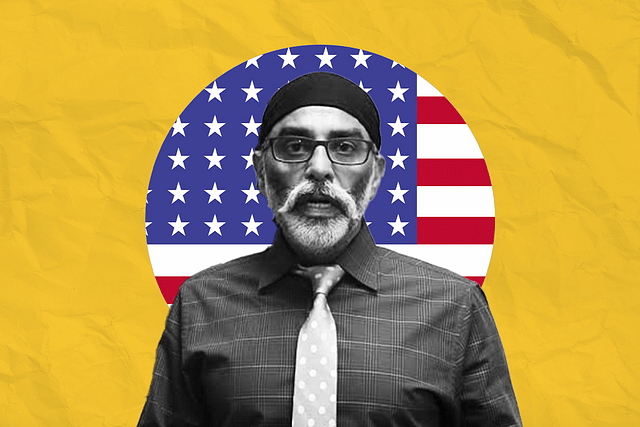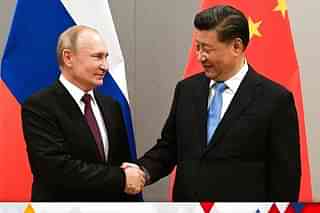World
Dear CIA, Pannu Is The Problem, Not R&AW
Ujjwal Shrotryia
May 01, 2024, 10:19 AM | Updated 10:40 AM IST
Save & read from anywhere!
Bookmark stories for easy access on any device or the Swarajya app.

On 29 April, the Washington Post (WaPo) published a report about an alleged murder plot by India's external intelligence agency Research and Analysis Wing (R&AW) against a Khalistani terrorist Gurupatwant Singh Pannu, a US citizen, on US soil.
The report revealed the name of a R&AW operative who was allegedly running the operation to assassinate Pannu, and who until now was only named as CC-1 in the US Department of Justice chargesheet filed in a New York court.
The report shoots even higher, this time, blaming the top hierarchy of R&AW from its former chief Samat Goel to National Security Advisor Ajit Doval, stating that it is highly likely that NSA Doval and Goel approved this high-profile operation.
A steady stream of stories is being leaked to Canadian and US media every three to four weeks, each time with new additional details of the alleged operation. From yesterday's WaPo story to last month's Bloomberg story, where it was claimed that the murder plot was planned by rogue Indian intelligence officials without the sanction of the Indian government, all appear to be leaks orchestrated from within the US government.
All this points to a concerted attempt by the CIA and the US government to push only one side of the story.
It looks like they are following the age-old tactic of repeating a lie often enough for it to be accepted as truth, in a desperate attempt to suppress the other, nastier side of the story — the side where a US citizen (read: terrorist) is able to threaten to kill the Prime Minister of India Narendra Modi, a sitting Chief Minister of an Indian state, and blow up an Indian passenger jet full of mostly Indian citizens (read: Hindus) — and no action, none whatsoever, is taken against him.
Instead, Pannu and his Khalistani ilk are given prior warning by the Federal Bureau of Investigation (FBI) that their life is in danger.
What the US intelligence agency has to do with protecting terrorists can only be explained by one reason: Pannu being a CIA asset.
An asset which can be used to bash India using the usual trope of human rights violations, whenever India tries to assert itself (against positions taken by the US), and show India’s place in the pecking order in the world.
Withholding and then approving the $4 billion deal for 31 MQ-9B Sea Guardian armed drones in the US Congress on the assurance that India will have to conduct a fair probe and punish those involved in the alleged murder plot is a case in point.
In fact, US Ambassador to India, Eric Garcetti, tried to justify this inaction by stating that in the United States of America, you don't arrest people for making threats. “In order to get a criminal conviction, you have to actually be taking action, not just making speeches,” said Garcetti. The least Garcetti can do is come up with a better excuse.
The Indian-origin Ridhi Patel would disagree with this assertion.
She was arrested and charged with 16 counts of felony for threatening to kill a city mayor and council members who did not support a ceasefire resolution against Israel's brutal bombings of Gaza.
Nor will the over 500 protesters who were arrested for protesting against Israel’s military campaign against Palestine. Students and professors, protesting mostly peacefully across various university campuses against Israel's actions in Gaza, were roughed up by riot gear clad police officers for raising anti-Semitic slogans.
Both of these instances show that the US takes preventive measures to stop violence.
However, in India’s case, it is not.
From the looks of it, Indian lives are less valuable than the life of an American. Their blood can be spilled to achieve America’s national objective, but the other way around is 'crossing a red line'.
Another question to ponder is whether a US citizen, or an Indian citizen, would enjoy this freedom if he tried to threaten the US President.
The bottom line is that the buck stops with the US government if it wants a serious and mutually beneficial relationship with India — it must stop protecting criminals and terrorists that hurt India's interest or worse, threaten to kill its citizens.
Also Read: Dear Ambassador Garcetti, Find A Better Excuse For US' Unwillingness To Punish Pannun
Why It Is Uncle Sam, The Ventriloquist, Behind Justin Trudeau's Moving Lips
Save & read from anywhere!
Bookmark stories for easy access on any device or the Swarajya app.
Staff Writer at Swarajya. Writes on Indian Military and Defence.
Support Swarajya's 50 Ground Reports Project & Sponsor A Story
Every general election Swarajya does a 50 ground reports project.
Aimed only at serious readers and those who appreciate the nuances of political undercurrents, the project provides a sense of India's electoral landscape. As you know, these reports are produced after considerable investment of travel, time and effort on the ground.
This time too we've kicked off the project in style and have covered over 30 constituencies already. If you're someone who appreciates such work and have enjoyed our coverage please consider sponsoring a ground report for just Rs 2999 to Rs 19,999 - it goes a long way in helping us produce more quality reportage.
You can also back this project by becoming a subscriber for as little as Rs 999 - so do click on this links and choose a plan that suits you and back us.
Click below to contribute.





